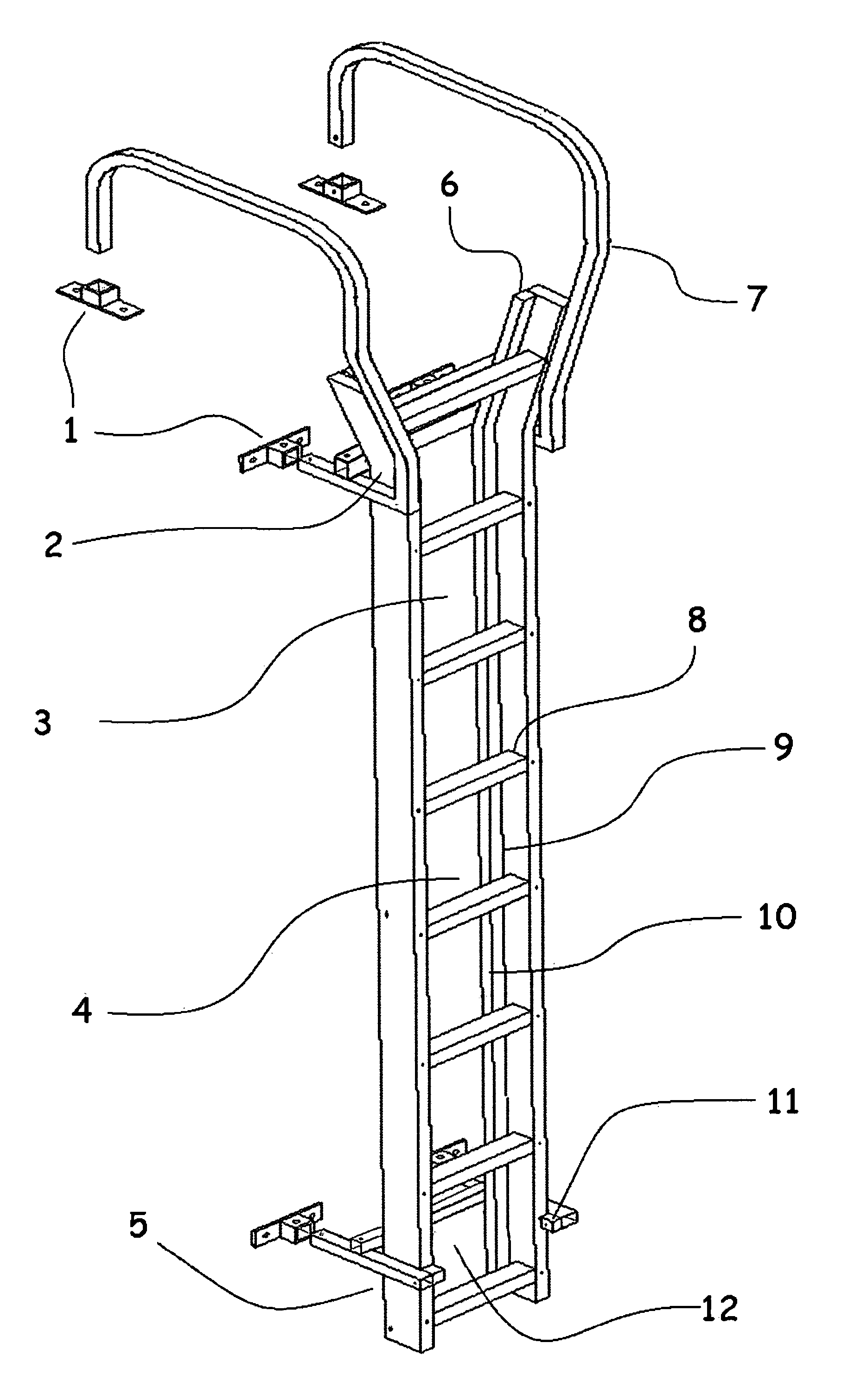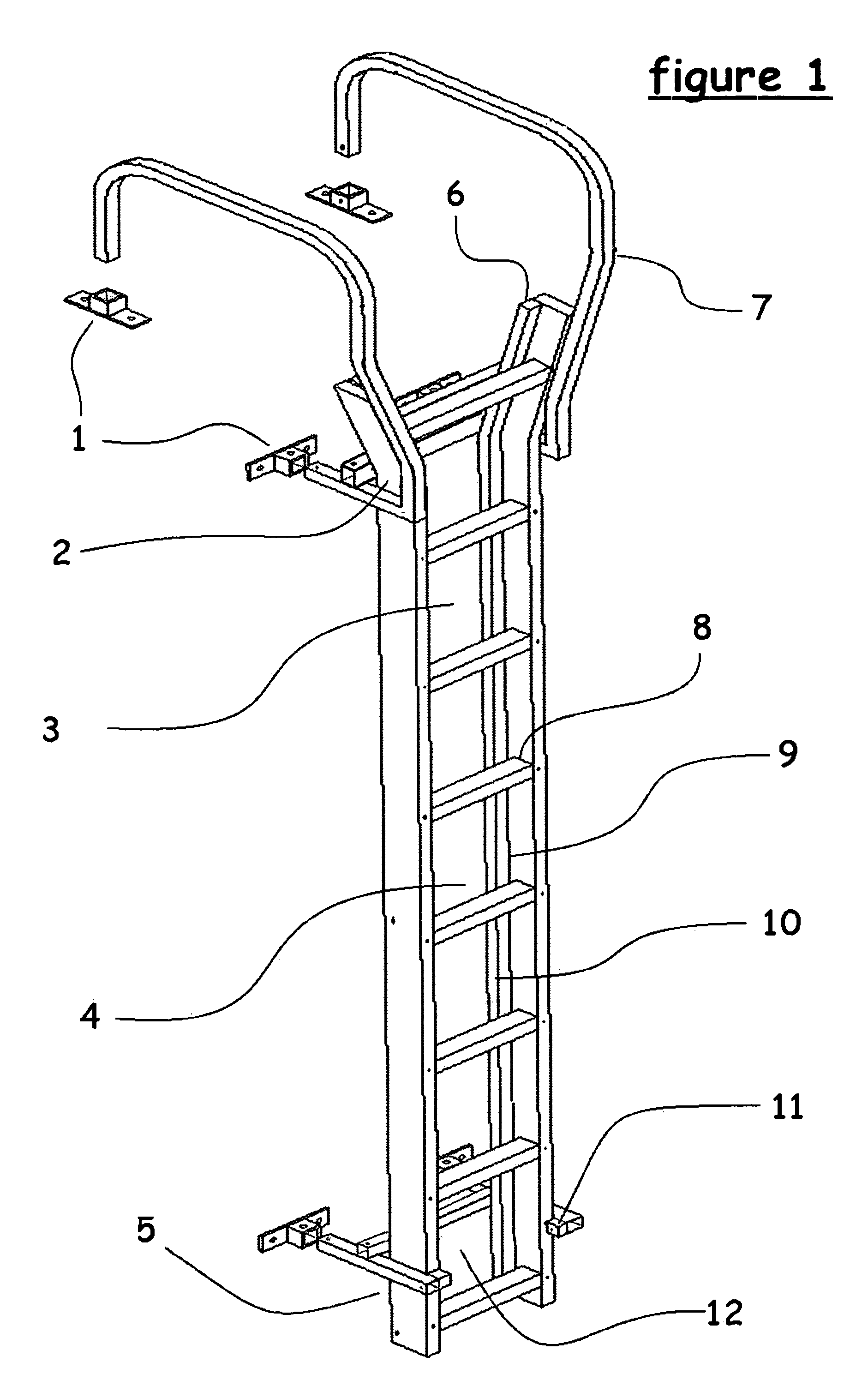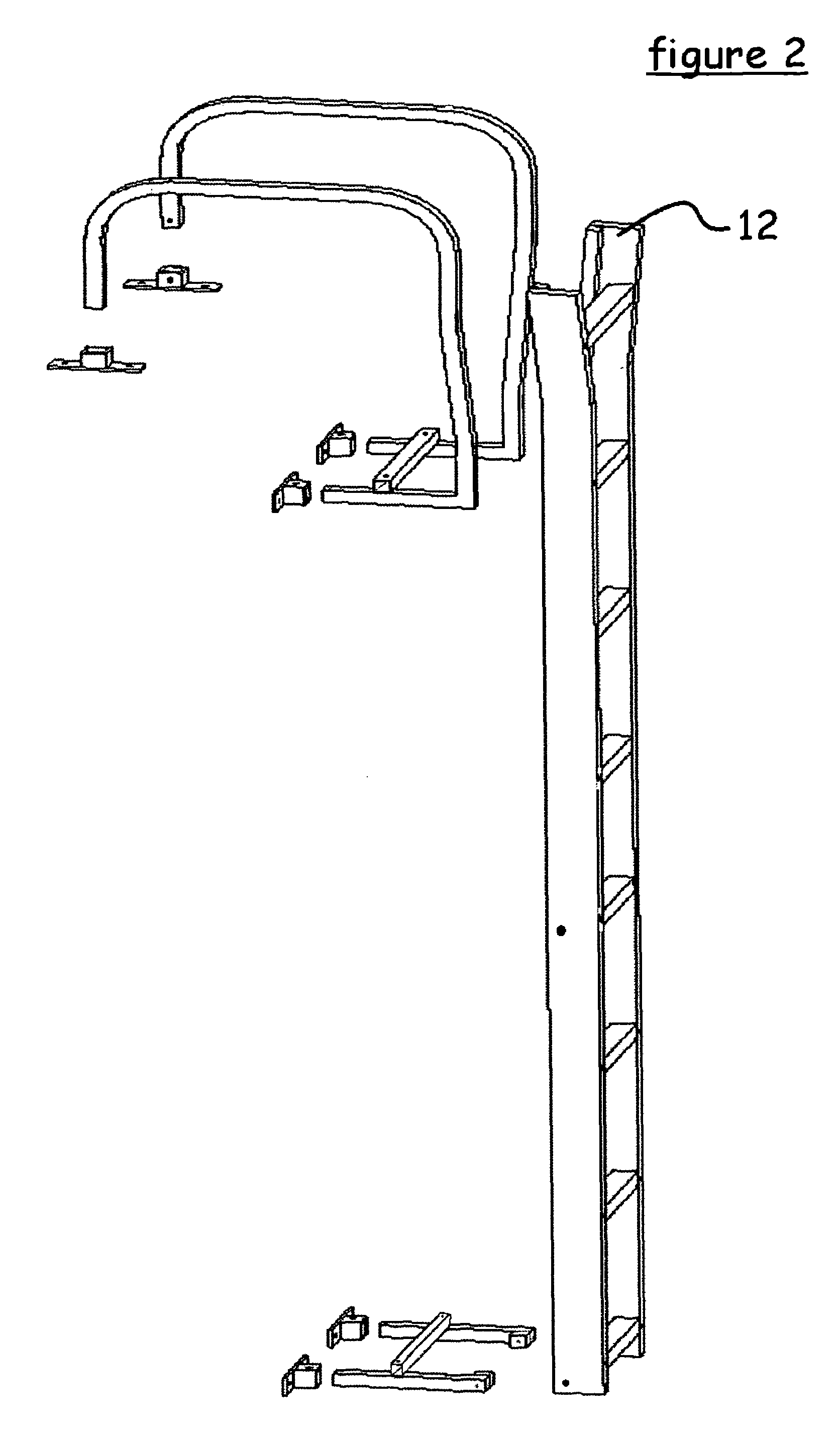Furthermore if it was desired to prevent access to an elevated area this device could permit removal of the ladder so no such access was available, then install the ladder when access was required.
But none of these suspend the ladder off of the ground.
The bottom of the ladder must make contact with the ground for support which would be a problem if the ground was not level, soft, unstable or even moving such as on a vehicle.
Also if space was an issue, placing the feet of the ladder at a substantial distance of the surface may be hazardous or not possible.
If an attempt was made to suspend a ladder in one of these referenced devices, none of them have a means of holding the lower portion of the ladder at a distance of the wall duplicating the upper distance, so during use the suspended ladders incline angle would be dangerous.
Not to mention the risk of failure of the attachment as it was not intended to support the complete weight of a ladder and user.
This ladder bracket combination does not provide a portable ladder but rather a ladder section that can only be used if attached to it's
mating bracket, it is not
usable away from the mounted position.
Additionally, if someone foolishly attempted to use the ladder section as a portable ladder and a fire occurs, the ladder would not be present to perform it's stated purpose.
This type of ladder is suspended over walls by means of hooks integrated into the top of the ladder, but does not provide safe use unless in the hung configuration, this is not a portable ladder as referred herein.
Also all of these devices are meant only for use during incline and none provide a suitable storage location for a ladder when it is not in use.
Similarly there is also a vast array of vehicle mounted ladders such as U.S. Pat. No. 4,245,716, U.S. Pat. No. 5,046,582, U.S. Pat. No. 6,264,222, U.S. Pat. No. 6,378,654, GB2384812, but these devices lack in their ability to be removed, so they can't be used at other locations, they are not portable.
If vertical access is required at a different location other than the mounted location an additional ladder would be needed or the person would need to improvise using a box, or bucket, or other dangerous means.
Also these ladder support methods do not provide a storage or transportation location for the ladder in the mounted
usable configuration.
If using one of these ladders the operator would need to install the ladder for use, then remove it and store it for transportation, then re-install it for use again, a very inconvenient proposition.
Inventions U.S. Pat. No. 6,250,425, U.S. Pat. No. 6,357,548, U.S. Pat. No 4,408,680 are also vehicle mounted portable ladder support devices, and although they support a portable ladder for use they do not suspend the ladders nor do they provide for storage or transportation in this
usable position.
Another concern with these devices is the fact that the
method of support is such that the ladders are cantilevered, not being supported properly for their design.
During use a lot of stress is placed on the ladders stiles at the locations where the stiles are supported by these devices, so much leverage could cause the ladders to fail, or break near these contact points causing serious damage and injury.
With space being of value in a recreational vehicle, storage and transportation of the ladder inside the vehicle may not be desired.
But without the ladder, roof access isn't possible.
And because suspension means are not provided the ladder can't be transported outside the vehicle.
Many rv's have no need for a bunk ladder, but do need access to the roof as well as a portable ladder for other tasks which this device will not accommodate.
While all the reviewed prior art was mostly practical for it's intended purpose, none exists that was capable of suspending a portable ladder adjacent a surface adequately for use and storage while additionally facilitating use of the portable ladder independent of suspension.
 Login to View More
Login to View More  Login to View More
Login to View More 


